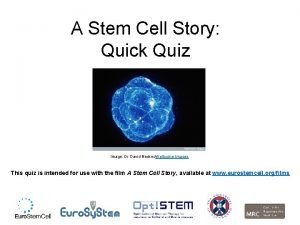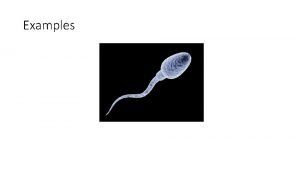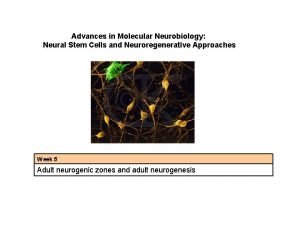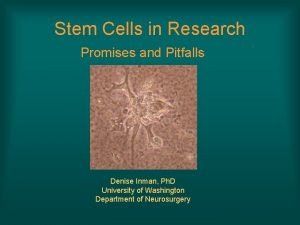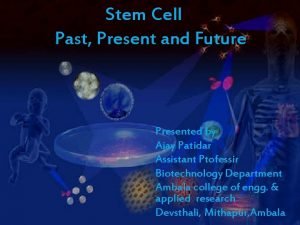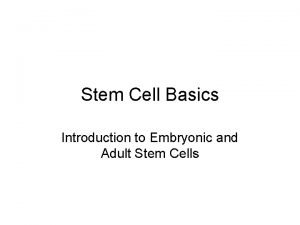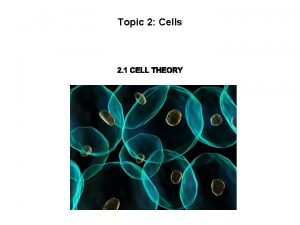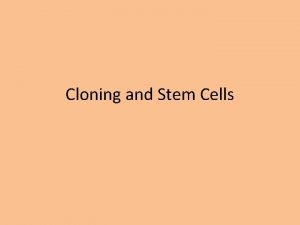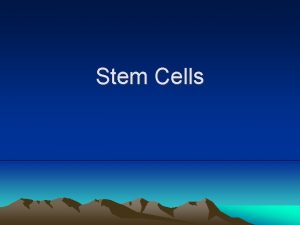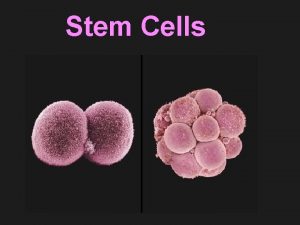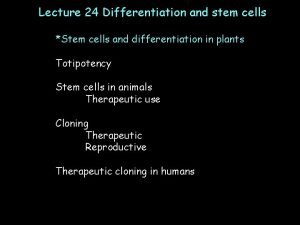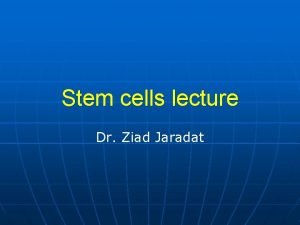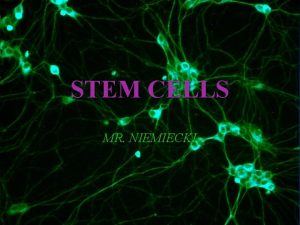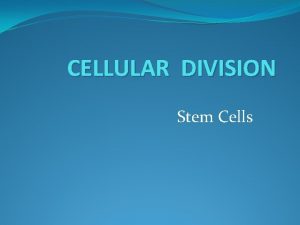Stem Cells What are stem cells The first











- Slides: 11

Stem Cells

What are stem cells? The first cells are stem cells. These are unspecialized cells capable of developing into many different types of cell. Stem cells found in embryos are called embryonic stem cells and develop into all the different types of cell in the body. If stem cells continued to divide as they were, humans would end up as a large jelly-like blob!

Changing cells When the embryo contains about 500 cells, the cells stop being the same and they stop getting smaller with each division. They start to differentiate into different types of cell. At this point, stem cells no longer form two new stem cells when they divide. Instead, one of the two daughter cells becomes a progeny or tissue cell. stem cell tissue cell

Becoming specialized Tissue cells continue to divide and differentiate, each time becoming more and more specialized. stem cell tissue cells Some will become nerve cells, others will become blood cells, muscle cells, bone cells, etc. nerve cells red blood cells cardiac muscle cells

A controversial source? Most stem cell research has used cells obtained from embryos left over from fertility treatment. These are called embryonic stem cells (ESCs) and are the most powerful type because they can turn into any type of cell. Their use in research is strongly criticized by people who believe it is unethical to kill embryos for their cells. Stem cells from fetuses are almost as powerful, and these have also been found in the blood of umbilical cords and amniotic fluid of pregnant women.

If you ran the country…

Therapeutic cloning

What are adult stem cells? Adults also contain stem cells, where they are found in small numbers in many organs, including bone marrow, brain, skin and muscle. Adult stem cells normally maintain and repair damaged tissue, and can usually only make a small number of cell types. For example, adult stem cells in the skin only normally form skin cells. Research has shown that some adult stem cells can be manipulated to produce many different cell types (e. g. brain stem cells can make muscle cells). This is called plasticity.

What are bone marrow transplants? Stem cells found in bone marrow have been used for many years to treat diseases that affect blood cells, such as leukaemia, by a bone marrow transplant. l Bone marrow is harvested from a suitable donor under general anaesthetic. l The patient’s abnormal blood cells are destroyed by chemotherapy and/or radiotherapy. l The donated bone marrow is injected into the patient. l Stem cells in the injected bone marrow circulate in the blood and end up in the patient’s bone marrow, where they start to divide and produce new blood cells.

Advantages of using adult stem cells l They come from volunteers so they are more ethically acceptable. l A patient’s own stem cells could be used to treat their own disease, avoiding the problem of immune rejection. l It might be easier to guide their development into specific cell types. l They are less likely to become cancerous. There is a great deal of research into using adult stem cells to treat diseases. They could reduce the need for organ transplants, which have long waiting lists.

How could adult stem cells be used?

